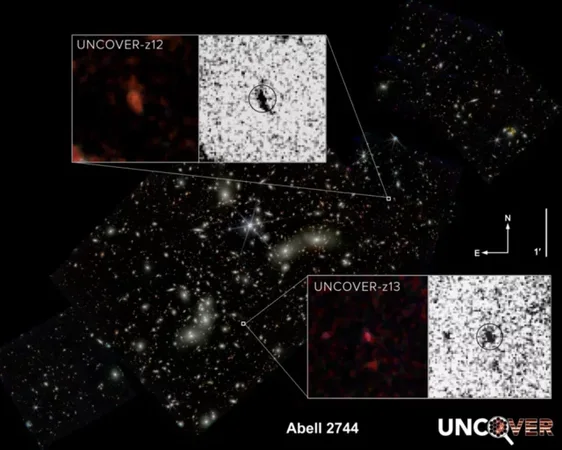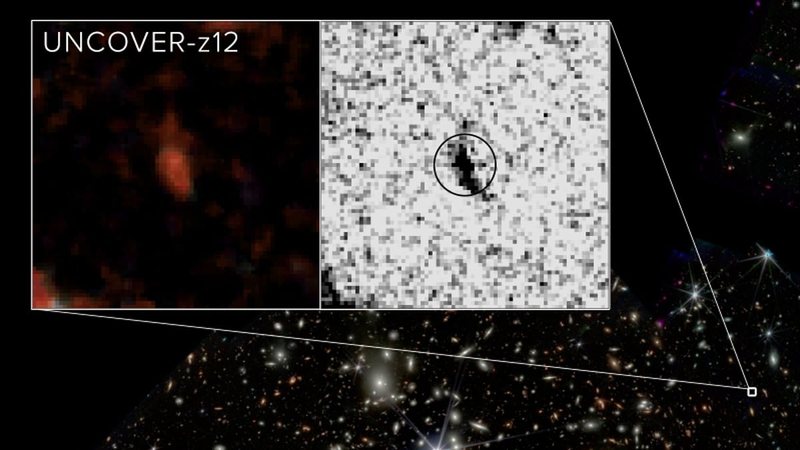
The James Webb Space Telescope has spotted two of the most distant galaxies ever seen by the human eye.
Bingjie Wang of the Penn State Eberly College of Science and a member of the JWST UNCOVER team were the ones who discovered the two galaxies using infrared.
A massive gravitational lens located about 3.5 billion light-years away in the form of the galaxy cluster known as Abell 2744 proved to be a big help in the discovery.
The immense gravity of the cluster distorts the fabric of space-time enough to magnify the light of galaxies over a great distance.
Bingjie and JWST UNCOVER member used the James Webb Space Telescope to spot galaxies magnified by cosmic lenses.

The team then identified the two high-redshift galaxies. One of the galaxies, UNCOVER-z13 has a redshift of 13.079. It is the second most distant known galaxy. The other galaxy, UNCOVER-z12, has a redshift of 12.393 and is the fourth most distant galaxy to us.

Wang described the difference between previously discovered and recently discovered galaxies.
"Galaxies previously detected at these distances appear as a point in our images," Wang said. "But one of our pictures shows it elongated, almost like a peanut, and the other looks like a ball of fluff."
Almost a million miles away, the James Webb Telescope continues to snap pictures of the "distant past."
Since transmitting its first data, it has made stunning discoveries, including a plume of water that stretched 6,000 miles and a galaxy that formed more than 13 billion years ago.
The telescope is an engineering marvel: its massive mirror makes it possible to gather light from the faintest objects. It has multiple ways to block and break up that light, giving us detailed portraits of distant galaxies and nearby neighbors with nearly equal clarity.
As the Web continues its long journey, since its launch into space it has shown us that the way we see the universe will never be the same.

The group of galaxies known as Stephen's Quintet. The galaxy on the left is 40 million light years away while the four galaxies on the right are 250 million light years away. In one picture we see tens of millions and hundreds of millions of years into the past. (A2 Televizion)














